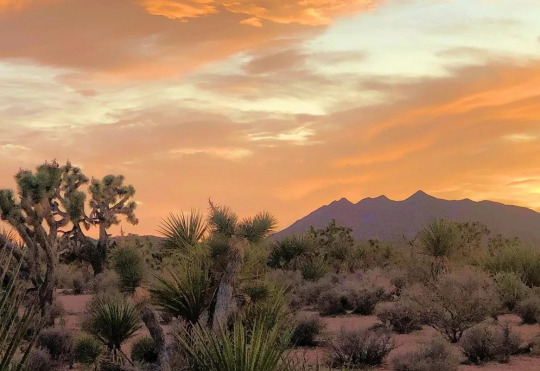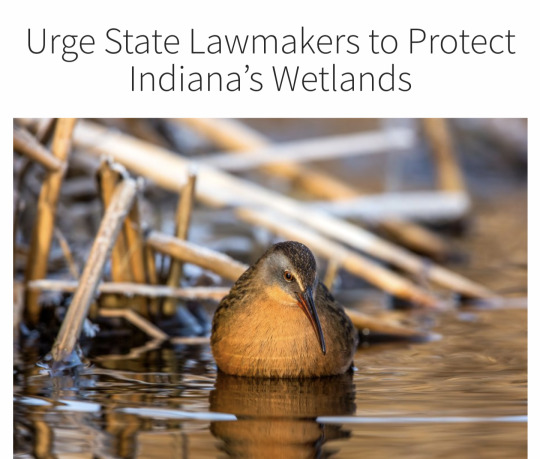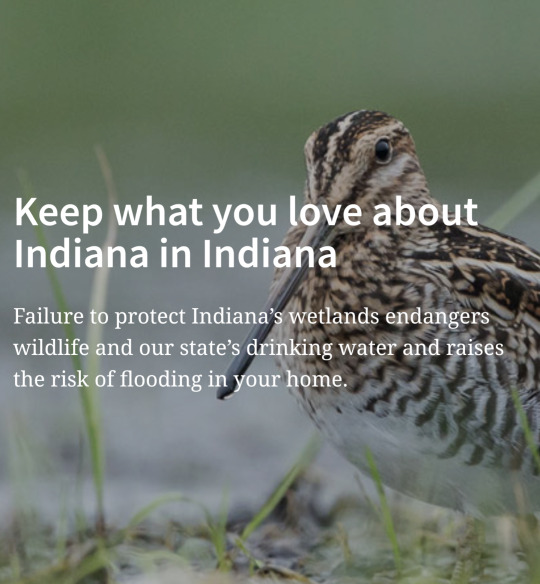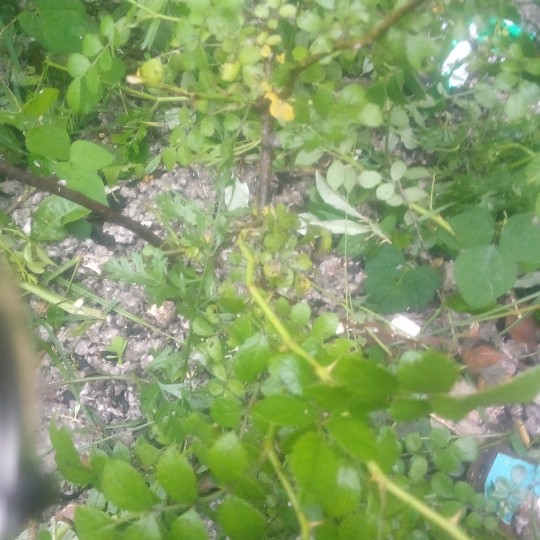#land conservation
Text



Miyawaki tree planting (Pocket forest) method in the hi desert.
6 months ago we installed 14 trees and 20 shrubs. More than half of the plants and shrubs are native to the area. The rest are fruit trees.
I wasn’t sure what to expect when I got to the site. It’s been 6 weeks since we watered !!
What a surprise 😮 It’s coming along beautifully!
31 notes
·
View notes
Link
“The Wampanoag Common Lands, as the project is called, seeks to restore a 32-acre (13-hectare) former Catholic summer camp on the banks of the Muddy Pond in Kingston to something closer to what it might have looked like before European colonization transformed it.The Native Land Conservancy, the local Native group that received the donated land this year, envisions a natural environment filled with indigenous plants and animals where Wampanoags can practice cultural ceremonies and educate new generations in traditional ways.Ramona Peters, a Mashpee Wampanoag who founded the conservancy, said the effort is all the more meaningful because the land is some 5 miles from where Pilgrims arriving on the Mayflower established the English colony of Plymouth, near the remnants of a Wampanoag community wiped out by European disease.“
611 notes
·
View notes
Text
https://ictnews.org/news/biden-designates-avi-kwa-ame-a-national-monument

Joe Biden designates Avi Kwa Ame a national monument
President Joe Biden announced on Tuesday Avi Kwa Ame as a national monument in Nevada, following up on a promise he made in late 2022.
Biden also declared a national monument in Texas and the creation of a marine sanctuary in U.S. waters near the Pacific Remote Islands southwest of Hawai'i.
Biden spoke at the White House Conservation in Action Summit at the Interior Department with Fort Mojave Indian Tribal Chairman Timothy Williams commending him during his introduction.
“Under his leadership we have a seat at the table and we are seeing an unprecedented era and opportunity for our tribal communities,” Williams said. “And we are all grateful to the president for taking historic action to combat the climate crisis and conserve and restore our nation’s land and waters.”
Williams was among the proponents to make Avi Kwa Ame, also known as Spirit Mountain, a national monument. It’s considered sacred to the Mojave people and for the nine other Yuman-speaking tribes along the Colorado River, as well as the Hopi and Chemehuevi Paiute tribes, Williams said.
The site in southern Nevada spans more than 500,000 acres near the Arizona and California state lines. It’s home to bighorn sheep, desert tortoises and a large concentration of Joshua trees, some of which are more than 900 years old. It’s also listed on the National Register of Historic Places.
It took more than three months for Biden to make the announcement.
“It’s a place of reverence, it’s a place of spirituality, it’s a place of healing and now it will be recognized for its significance it holds and be preserved forever,” Biden said. “I look forward to visiting it myself.”
He thanked Williams and the legislative leaders who advocated for Avi Kwa Ame including Nevada Rep. Dina Titus, Democrat, who sponsored a bill to protect the rugged region near the Mojave National Preserve from development, including solar farms and a proposed wind farm.
“To the native people who point to Avi Kwa Ame as their spiritual birthplace, and every Nevadan who knows the value of our cherished public lands: Today is for you,″ Titus tweeted.
The Honor Avi Kwa Ame coalition, which includes tribes, local residents, state lawmakers and conservation groups, said its members were "overjoyed" to learn the site will be a new national monument.
"Together, we will honor Avi Kwa Ame today — from its rich Indigenous history, to its vast and diverse plant and wildlife, to the outdoor recreation opportunities created for local cities and towns in southern Nevada by a new gorgeous monument right in their backyard," the group said.
Interior Secretary Deb Haaland released a press release praising the announcement.
“I am grateful to President Biden for taking this important step in recognition of the decades of advocacy from tribes and the scientific community, who are eager to protect the objects within its boundaries,” Haaland stated.“Together with tribal leaders, outdoor enthusiasts, local elected officials, and other stakeholders, we will manage this new monument for the benefit of current and future generations.”
In Texas, Biden plans to create the Castner Range National Monument in El Paso. It’s the ancestral homeland of the Comanche and Apache people, and its cultural ecology is considered sacred to several Indigenous communities.
The designation will protect the cultural, scientific and historic objects found within the monument's boundaries, honor U.S. veterans, service members and tribal nations, and expand access to outdoor recreation on public lands, the White House said.
Located on Fort Bliss, Castner Range served as a training and testing site for the U.S. Army during World War II, the Korean War and the Vietnam War. The Army ceased training at the site and closed Castner Range in 1966.
The Castner Range monument "will preserve fragile lands already surrounded on three sides by development,'' help ensure access to clean water and protect rare and endangered species, said Rep. Veronica Escobar, Democrat-Texas.
“The people of El Paso have fought to protect this for 50 years. Their work has finally paid off,” Biden said.
Biden designated his first national monument, in Colorado, last year. In 2021, he restored the boundaries for Bears Ears National Monument in Utah after they were significantly narrowed by President Donald Trump, a Republican.
In the Pacific, Biden will direct the Commerce Department to consider initiating a new national marine sanctuary designation within 30 days to protect all U.S. waters around the Pacific Remote Islands. If completed, the 777,000 square miles, southwest of Hawaii, will help ensure the U.S. reaches Biden's goal to conserve at least 30 percent of ocean waters under U.S. jurisdiction by 2030, the White House said.
Among Hawaiian state leaders, Biden thanked Native Hawaiian leaders who “worked tirelessly to protect our oceans. I want to thank you. I genuinely mean it, it wouldn't have happened without you.”
Biden also announced a series of steps to conserve, restore and expand access to public lands and waters across the country, the White House said.
The proposals seek to modernize management of America's public lands, harness the power of the ocean to help fight climate change, and better conserve wildlife corridors. Biden also will announce new spending to improve access to outdoor recreation, promote tribal conservation and reduce wildfire risk.
Bidden added he’s committed to working with tribal leaders and legislative leaders on bringing “healthy and abundant” salmon run back to the Colorado River system.
“There’s nothing beyond our capacity if we work together,” Biden said.
66 notes
·
View notes
Text
Please consider signing and sharing this petition to save Indiana's wetlands by the Audubon Great Lakes

Indiana has already lost over 85% of its wetlands. Our remaining wetlands provide natural protection from flooding, filter pollution runoff, and provide critical habitats for birds and other wildlife. One acre of wetland can store up to one million gallons of water. But our wetlands are under threat again. Despite overwhelming opposition from Hoosiers, special interests are working to further weaken wetlands protection. Tell your elected officials to protect our hardworking wetlands.
The fate of Indiana's wetlands is in the hands of our state lawmakers. Two years ago, Indiana lawmakers passed Senate Bill 389, which rolled back protections for more than half of Indiana's wetlands. Since then, more than 260 wetland acres have been destroyed.
Now, the U.S. Supreme Court's recent decision in Sackett v. EPA could place even more wetlands (as many as 300,000 acres!) at risk of destruction if state legislators don't take steps to protect them.
Wetlands provide countless benefits to wildlife and people, including vital habitat for vulnerable marsh birds, such as Virginia Rail and Least Bittern. They play an important role in filtering water, keeping our communities safe from flooding, and reducing harmful emissions by naturally storing carbon.
Public opinion research shows that 94% percent of Hoosier voters want state leaders to strengthen or maintain Indiana's current wetland protections. Raise your voice and let your decision makers know that you do too! Urge your state lawmakers to advance solutions that will protect wetlands and their immense contributions to our state.

#Indiana#wetlands#protect wetlands#endangered#endangered birds#endangered animals#land conservation#usa politics#write your representatives#save the environment#petition
13 notes
·
View notes
Text
Even though lake sturgeon have been around for such a long time, there is still so much to be learned about them. “The Black River research facility has been restoring the sturgeon population and providing a better understanding of sturgeon, which is important to protect and restore this species, and it creates a big ripple effect,” Gass says. “Anything we can do to connect people to their local area — helping them see their role in stewardship conservation — is so valuable for protecting Michigan and Great Lakes natural resources.”
- Bringing back Michigan’s lake sturgeon, Emilie Lorditch and Deon Foster

(photo source)
#lake sturgeon#michigan#great lakes#lake michigan#lake superior#fishblr#fish#conservation#animal conservation#land conservation#lakes#midwestern usa#midwest
2 notes
·
View notes
Text
How Logging Endangers Warren County's Rural Charm
Longtime Warren County residents will remember of floods of 2005 and 2006, and will appreciate the need for effective flood control. Recent commercial logging near Merrill Creek Reservoir raises concerns, notably the potential for increased stormwater runoff and water quality degradation. This is alarming considering the logging industry's exemptions from certain flood hazard regulations in the state of New Jersey. As climate change intensifies rain events, current logging practices and the lack of effective regulation seem increasingly risky.
Balancing private property rights with environmental and public welfare needs is crucial. Adopting forestry management plans tuned more towards ecological restoration could offer an environmentally friendly alternative to logging, safeguarding our forests and enhancing flood control measures.
If you are interested in learning more, click on the above link.
2 notes
·
View notes
Text
Not fandom related by I’m so so proud of my friends/colleagues for the work they did on this incredibly important co-management project. They’ve put so much time and care into a more equitable strategy for conservation and it’s cool as hell. Check it out 😘
#I’m a lucky gal to have friends that are smart as hell and do good stuff!#land comanagement#Bears Ears National Monument#land conservation
2 notes
·
View notes
Text
Biden creates a new national monument near the Grand Canyon - https://www.npr.org/2023/08/08/1192622716/biden-national-monument-grand-canyon-arizona
The move protects lands that are sacred to indigenous peoples and permanently bans new uranium mining claims in the area. It covers nearly 1 million acres.
—
"It will help protect lands that many tribes referred to as their eternal home, a place of healing and a source of spiritual sustenance," she said. "It will help ensure that indigenous peoples can continue to use these areas for religious ceremonies, hunting and gathering of plants, medicines and other materials, including some found nowhere else on earth. It will protect objects of historic and scientific importance for the benefit of tribes, the public and for future generations."
—
The new national monument will be called Baaj Nwaavjo I'tah Kukveni Grand Canyon National Monument. According to the Grand Canyon Tribal Coalition that drafted a proposal for the monument, "Baaj Nwaavjo" means "where tribes roam" in Havasupai, and "I'tah Kukveni" translates to "our ancestral footprints" in Hopi.
all land is sacred (and should be returned) but this is good news.
#indigenous#native american#ndn#arizona#grand canyon#climate change#nature#good news#land conservation and preservation#hopi#havasupai
7K notes
·
View notes
Text
For years, the people of the Kitasoo/Xai’xais First Nation watched over their waters and waited. They had spent nearly two decades working with Canada’s federal government to negotiate protections for Kitasu Bay, an area off the coast of British Columbia that was vulnerable to overfishing.
But the discussions never seemed to go anywhere. First, they broke down over pushback from the fishing industry, then over a planned oil tanker route directly through Kitasoo/Xai’xais waters.
“We were getting really frustrated with the federal government. They kept jumping onboard and then pulling out,” says Douglas Neasloss, the chief councillor and resource stewardship director of the Kitasoo/Xai’xais First Nation. “Meanwhile, we’d been involved in marine planning for 20 years – and we still had no protected areas.”
Instead, the nation watched as commercial overfishing decimated the fish populations its people had relied on for thousands of years.
Nestled on the west coast of Swindle Island, approximately 500km north of Vancouver, Kitasu Bay is home to a rich array of marine life: urchins and abalone populate the intertidal pools, salmon swim in the streams and halibut take shelter in the deep waters. In March, herring return to spawn in the eelgrass meadows and kelp forests, nourishing humpback whales, eagles, wolves and bears.
“Kitasu Bay is the most important area for the community – that’s where we get all of our food,” Neasloss says. “It’s one of the last areas where you still get a decent spawn of herring.”
So in December 2021, when the Department of Fisheries and Oceans withdrew from discussions once again, the nation decided to act. “My community basically said, ‘We’re tired of waiting. Let’s take it upon ourselves to do something about it,’” Neasloss says.
What they did was unilaterally declare the creation of a new marine protected area (MPA). In June 2022, the nation set aside 33.5 sq km near Laredo Sound as the new Gitdisdzu Lugyeks (Kitasu Bay) MPA – closing the waters of the bay to commercial and sport fishing.
It is a largely unprecedented move. While other marine protected areas in Canada fall under the protection of the federal government through the Oceans Act, Kitasu Bay is the first to be declared under Indigenous law, under the jurisdiction and authority of the Kitasoo/Xai’xais First Nation.

Pictured: "In some ways, I hope someone challenges us" … the Kitasoo/Xai’xais stewardship authority.
Although they did not wait for government approval, the Kitasoo did consult extensively: the declaration was accompanied by a draft management plan, finalised in October after three months of consultation with industry and community stakeholders. But the government did not provide feedback during that period, according to Neasloss, beyond an acknowledgment that it had received the plan...
Approximately 95% of British Columbia is unceded: most First Nations in the province of British Columbia never signed treaties giving up ownership of their lands and waters to the crown. This puts them in a unique position to assert their rights and title, according to Neasloss, who hopes other First Nations will be inspired to take a similarly proactive approach to conservation...
Collaboration remains the goal, and Neasloss points to a landmark agreement between the Haida nation and the government in 1988 to partner in conserving the Gwaii Haanas archipelago, despite both parties asserting their sovereignty over it. A similar deal was made in 2010 for the region’s 3,400 sq km Gwaii Haanas national marine conservation area.
“They found a way to work together, which is pretty exciting,” says Neasloss. “And I think there may be more Indigenous protected areas that are overlaid with something else.”
-via The Guardian, 5/3/23
#indigenous#indigenous issues#indigenous sovereignty#canada#british columbia#land back#first nations#tribal sovereignty#pacific northwest#marine protected area#conservation#sustainability#overfishing#marine science#canadian government#kitasoo-xai'xais#direct action#good news#hope
11K notes
·
View notes
Text
More NZ conservation news from an outsider.
youtube
This type of work is why their case studies re invasive species are featured around the world.
0 notes
Text
Subway Sandwiches: A $5B Gift?
Subway Cofounder May Make One of the Largest Donations in History
Subway cofounder Peter Buck donated 50% of the sandwich chain to charity in his will, according to his family.
Peter Buck was a nuclear physicist working for United Nuclear when he put up $1000 in 1965 for his friend Fred DeLuca to open a sandwich shop. “Pete’s Super Submarines” became “Pete’s Subway,” and by 1973, it was “Subway Sandwiches” with a new logo, 16 locations, and franchises beginning…

View On WordPress
0 notes
Text
If you’d like to follow and / or participate in the land conservation project I am leading in the Mojave desert, please support our work this year.
Thanks,
Urban Soul Farmer
11 notes
·
View notes
Text
This Earth Day I grieve the ancient olive groves of Palestine, I grieve the groundwater and once unpolluted oceans of that same beautiful land. I feel an indescribable rage when I picture occupation forces burning these sacred groves to the ground and salting the earth that remains.
This Earth Day I wish for a free Palestine, Sudan, Congo, Hawaii. For the freedom of their people and their lands. You can not fight for a cleaner healthier planet without fighting against imperialism.
#earth day#free palestine#free congo#free sudan#land back#free hawaii#anti imperialism#conservation#first nations
807 notes
·
View notes
Text
https://www.ecowatch.com/canada-lynx-habitat-expansion-us.html
#lynx#endangered species#canada#animal conservation#good news#animals#nature#habitat protection#land conservation
37 notes
·
View notes
Text

I took these pictures and Google prepared an animation.
It is a good explination for things.
And I am having some signs manufactured that will reinforce the dicision
0 notes
